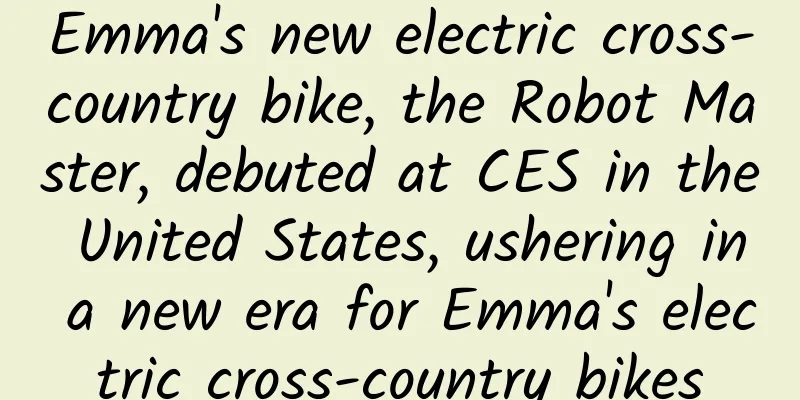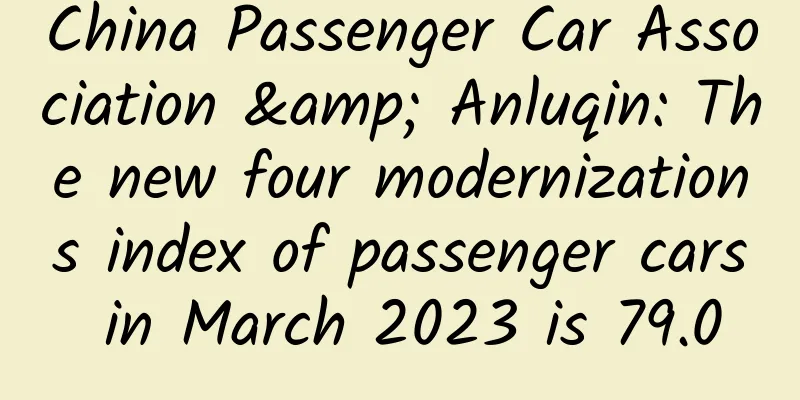Practical Tips | Shopping Routes: A Concept That Operators Must Know

|
Over the years that I have been engaged in e-commerce , I have worked on several larger platforms, and now I have some insights and experience of my own. I keep hearing people ask: Why is my conversion rate so low? How to improve conversion rate? Especially for newcomers who have just entered the industry, they are overwhelmed by the conversion rate indicator. After hearing this so many times, I can’t help but ask these people: Is your shopping process optimized? What is the shopping flow? Most people looked at me blankly: What is the shopping route? What is the relationship between shopping routes and conversion rates? Today, as a person who has been through this and based on my personal experience, I will talk to you about what shopping routes are and how to design reasonable shopping routes to improve conversion rates. Shopping route concept1. What is the e-commerce shopping route?Before we start, let’s first clarify the definition and scope of shopping routes: The e-commerce shopping route is that users enter the homepage, go to the product details page through search, category or promotional advertisements, go to the shopping cart, and then check out and leave. During the entire process, precise recommendations are made to the right users in the right place. So are the shopping routes of e-commerce always so unchanging? That’s definitely not the case. It depends on the business model and product characteristics. For example, for fast-moving consumer goods, users are already very familiar with these products and the decision-making cost is low. For example, paper towels and cola, users do not need to browse the product details page and can directly add them to the shopping cart. 2. Design a reasonable shopping routeWhy do we spend so much time designing shopping routes? In the final analysis, a reasonable shopping route can achieve two purposes:
3. What is a good shopping route?Next, before we formally talk about the methodology, let’s first think about what kind of shopping route is a good shopping route?
In fact, all of the above statements make sense. As the market continues to change, nothing remains static. Different business models will lead to completely different shopping route designs. Next, I will talk about my understanding of shopping route design and how to design a shopping route that suits you. Key factors that determine shopping routesThe business model, or the core value of the business to users, determines the shopping route. On e-commerce platforms, there are three standard shopping paths (from home page to search, category, ad space, then to product details page, and finally to checkout and purchase). However, Vipshop only used one method to maximize the discounts and large-picture displays of big-brand clothing. Search and categories have been greatly weakened. Why? Because Vipshop's business model provides value to users in the form of discounted products from big brands, it is enough to maximize the path of preferential appeal among the three paths of e-commerce. I believe everyone is quite familiar with the early group purchasing model of life services. The characteristics are also short shopping path and single mode. But the appeal point of cheapness is clear and users buy into it. In the past few years, there are many companies that have positioned their value to users by offering more favorable prices. But from a business perspective, is this sustainable? From the user's perspective, is the low price the only thing that really impresses users? In the past two years, I have observed that as people's living standards improve and the capital market adjusts, many Internet companies are repositioning their business models and value to users. The positioning is no longer about offering better prices, but about providing better services. When the positioning is to provide better services, the shopping route may not be shorter, but longer. For example, the shopping route for selecting movie seats is longer than that for group buying movies. Movie group buying: users find the group buying – place an order and settle the bill – the process ends, the path is very short. As for choosing movie seats, you need to first determine the movie or cinema, then determine the viewing time, showtime, and seats, and then proceed with the purchase and settlement. The shopping process will be longer than that of a group movie purchase. But why do people prefer choosing movie seats instead of group buying? Although the shopping route for seat selection is long, it still improves the overall efficiency and experience of users. Therefore, the business model and the value of the business to users determine our shopping routes. In order to achieve business success, it is recommended to think about the essence of what is the core value of our company to users, whether it solves the pain points and needs of users, and whether it improves the efficiency of users and merchants? Starting from the core value to design the shopping route, and maximizing this core value is a good shopping route. As for whether a company/website/APP has only one shopping route or multiple shopping routes, this is still related to the products and services provided by the website and its user groups. A website only sells one category of goods, for example, Vipshop only has clothing categories. Or the number of goods sold is small; then the design of the shopping path will be different from Taobao, a website that provides a variety of categories of goods. Upsales & CrossSales1. Upsell & Cross-sell DefinitionUpsales: Get higher sales by giving users reasonable suggestions. For example, when you go to McDonald's and buy a meal combo, when you check out, the waiter will ask: Do you want to add 2 yuan to upgrade to a large cup of Coke? CrossSales: Selling products and services related to customers' existing consumption. For example, if a user has just purchased a mobile phone, recommend a mobile phone case to the user. In short, both Upsales and CrossSales are designed to get users to spend more money. But these are not forced on users, but help users discover their own needs. Offline Upsales and CrossSales are very mature. Supermarket shelf traffic flow: Generally, when we walk into a supermarket, we first pass the slow-moving goods counter, such as 3C products and clothing, then the daily users counter, and finally the food and fresh produce counter that we originally planned. But when shopping in a supermarket, people do shop more because it is so convenient to pick up items. When pushing a supermarket trolley, do some of you have an obsessive-compulsive urge to fill the trolley? Product organization: The way supermarkets organize products also makes it easier for users to buy more, such as putting related products together (Cross Sales) or bundling to guide customers to buy 2 items or a box (Upsales). Checkout: Adding ** dollars to exchange for purchases is also a common method, such as Watsons. 2. Notes on bothWhen focusing on increasing sales and cross-selling, it is important to pay attention to the following two points: Surprise your users, don’t scare them:
Therefore, to increase sales and cross-selling, you must pay attention to three points: right category, right price, and right place. Focus on customer experience, don’t play KPI games :
So, don’t pursue KPIs at the expense of customer experience. Really think about the user's real pain points and needs in every step and every scenario, combine them, and give reasonable suggestions. 3. How to design the twoScene decomposition, path decomposition: First, break down each step from the homepage to the checkout, think about the user's needs and pain points at each step. Don't force products into the user's mouth, but make sure they fit the user's needs. Don't ask for too much, just put them in the most appropriate place. Product relevance: How do you recommend related products? If there are not many products, we will do everything manually first. If there are many products, we will do the top-selling ones manually first, and let the machine learn the methods and logic of manual recommendation. In addition, when making manual recommendations, two points should be noted: recommend more related categories, so that users can buy two or three products instead of one product; recommend products with slightly higher prices, for example, let users buy products worth 1 yuan first, then 5 yuan, or 10 yuan. During the process, you must pay attention to the following: you cannot recommend just for the sake of recommendation or for the sake of selling more. Instead, you should make users feel greater satisfaction and feel that although they have spent more money, it is really worth it. Human Relevance: You can classify people and recommend similar things to people with the same attributes. Design shopping routes according to usersWe often hear that a website needs to have different features for different users. Some people don’t even have a clear idea of the business model, don’t understand the business, and haven’t thought clearly about the application scenarios, but they just start labeling and categorizing users. My suggestion is: if the website is not large, instead of catering to thousands of people, it is better to first focus on a few core user groups. 1. Several commonly used user classification methodsAccording to the life cycle (new users, old users): For new users, some websites will have tutorials/tips for beginners (of course this is by no means necessary). A good website does not require user training. On the other hand, some websites will have some special offers to attract users to place orders for the first time. For old users, they can be displayed differently because they already have browsing and purchase records. According to consumption level (high, medium, low): Some particularly high-end users, or users who contribute a particularly large proportion of transaction volume, may even have VIP processes or experiences specifically for these users. According to customer purchasing habits (search terms, categories, advertising space): Searching users are generally efficiency-oriented users. For this type of users, what we need to do is to try our best to help them find products quickly. We can start by improving the search results and experience of the top hot search terms. Categories are generally adjusted according to seasons and business market developments. There are usually some differences between the categories that rank at the top in winter and those that rank at the top in summer. The most obvious category is clothing. At the same time, some products sell particularly well and gradually develop into more products and subcategories, while others do the opposite and gradually withdraw from the market. Promotional advertising: Promotions are generally used to attract traffic to popular products, promote new products or services, and develop new users. McDonald's case summaryFinally, based on our lesson today, let’s use the McDonald’s case as a summary. The business model determines the shopping route:
Up sales & cross sales:
By user type:
|
<<: How to make money through WeChat mini programs? How to make money with WeChat Mini Programs?
>>: How to turn off the WeChat mini program function? How to log out of WeChat Mini Program?
Recommend
What does it mean for WeChat to open 11 interfaces?
WeChat has opened 11 JS-SDK interfaces, including...
91 Ten Articles: Tesla owner wins lawsuit and gets compensation three times the car model, Apple car may be SUV
1. Mr. Han, a Tesla owner in Tianjin, received a ...
Why are stranded whales so difficult to rescue?
At around 8 am on April 19, a sperm whale ran agr...
Why do elevators usually run in the opposite direction of the floor you are going to?
In the preface to Puzzling Mathematics, authors G...
Mitsubishi China recalls imported ASX and Pajero Sport
Recently, Mitsubishi Motors Sales (China) Co., Lt...
Why do we use liquid nitrogen to cool down the experiment? Can't we use liquid helium or liquid hydrogen?
Recently, I saw some netizens discussing why liqu...
A brief history of operations: Understand the 20 years of development and evolution of Internet operations in one article!
Preface Operations is an interesting thing. As on...
After 7 years, Logitech launches the new trackball mouse MX ERGO, which relaxes muscles 20% more
Trackballs are no longer mainstream products as m...
Can heating food wrapped in plastic wrap cause cancer? Experts respond
Recently, the Beijing Association for Science and...
How to design a user activation growth strategy from 0 to 1
User activation is the first step after completin...
How about Lanzhou WeChat Mini Program Development Company? Which one is better?
In recent years, with the launch of "Mini Pr...
A collection of 50 promotional plans!
For marketing, there is no doubt that promotion i...
Practice KOL marketing from 0 to 1!
KOL, the full name of which is Key Opinion Leader...
Pollen and catkins season, these drugs are more life-saving than loratadine
【Appendix】Tips for using loratadine 1. Although l...
Which copywriting do users like to read the most? Did you give the user anesthesia?
1. Which copywriting do users like to read the mo...









